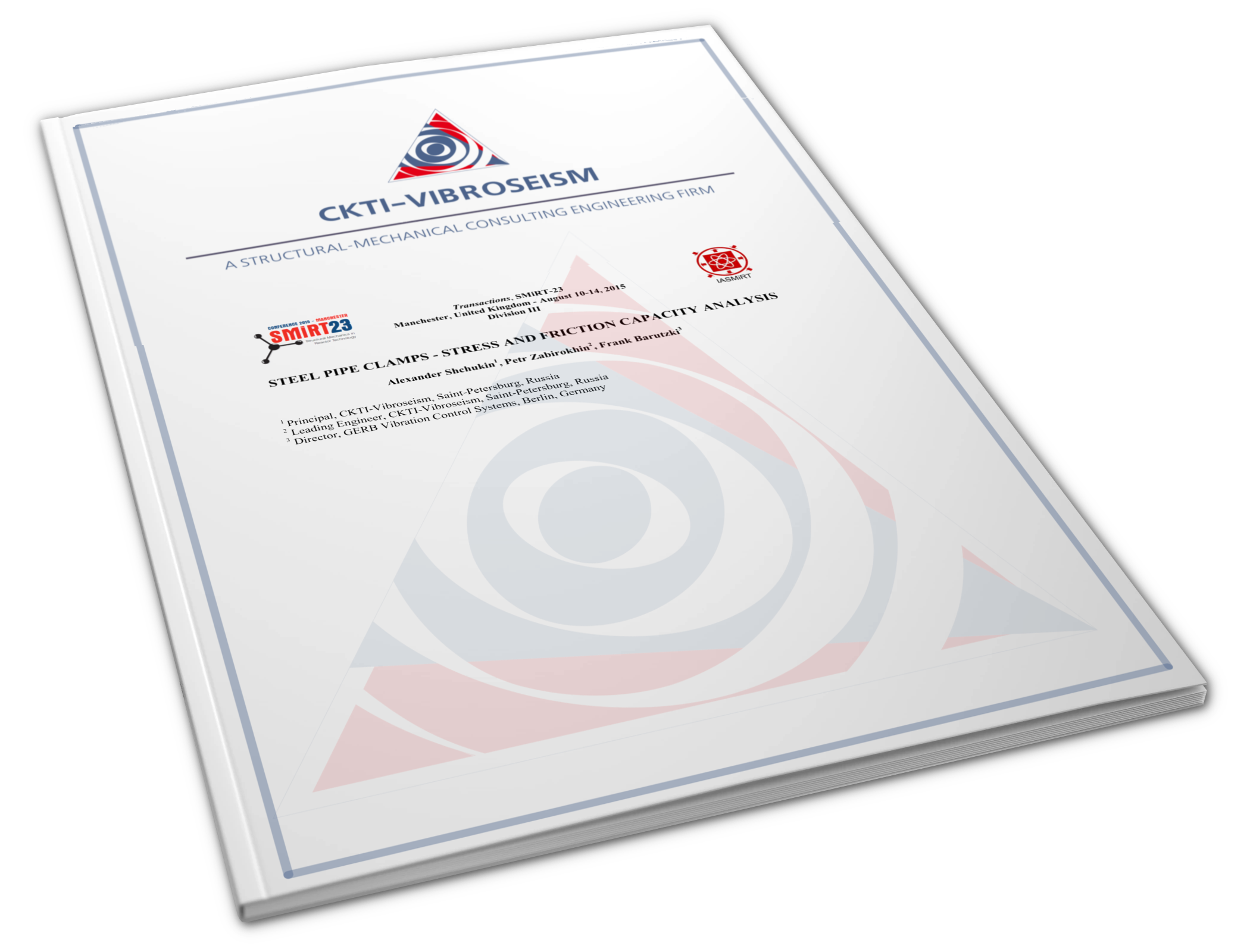Steel Pipe Clamps - Stress and Friction Capacity Analysis
SMiRT-23 Manchester, United Kingdom - August 10-14, 2015_CKTI-VIBROSEISM_clamps-paper_en

- Autors: : Щукин А.Ю. [Alexander Yu. Shchukin], Забирохин П.Б. [Petr B. Zabirokhin], Frank Barutzki
- Publisher: English
- Pages: 10
- N°: 36
- Library: Conference Papers
- Year: 2015
- File: SMiRT-23_CKTI-VIBROSEISM_clamps-paper_upd
Hits: 1113
Pipe clamps are often seen as simple elements used for the connection and fixation of pipes and support elements. In case of existing piping, especially in nuclear facilities welding to existing piping is often not acceptable or extremely costly. Friction based supports could offer an alternative approach if their design is proven and the occurring loads can be transferred without sliding or clamp failure.
This paper describes the use of friction clamps for the connection of viscous fluid damper to piping systems that are subject to severe seismic loading. A main advantage of these elements is the ease of installation and the omission of any welding.
The pipe is connected to the damper only by friction basically using a welded clamp consisting of top and bottom parts. A number of accurately pre-stressed bolts provide the necessary compressive force and friction. For choosing optimal clamp dimensions (thicknesses, widths, bolts number, diameters, etc.) and the proper preload of the bolts a set of design rules has been developed in order to achieve acceptable stress levels in the clamp at maximum design load and sufficient friction capacity in case of torsional loads.
The paper also presents the results of structural finite element analysis of several steel pipe clamps used for connection of viscous dampers to pipes with different dimensions. The main purpose of this analysis is to prove that the clamp sustains the maximal seismic force transferred from the damper without sliding between tube and clamp surfaces and without clamp failure. The paper provides the description of the main steps of analysis and the comparison with the proposed analytical method of assessment.
 CKTI-Vibroseism Ltd.
CKTI-Vibroseism Ltd. 
